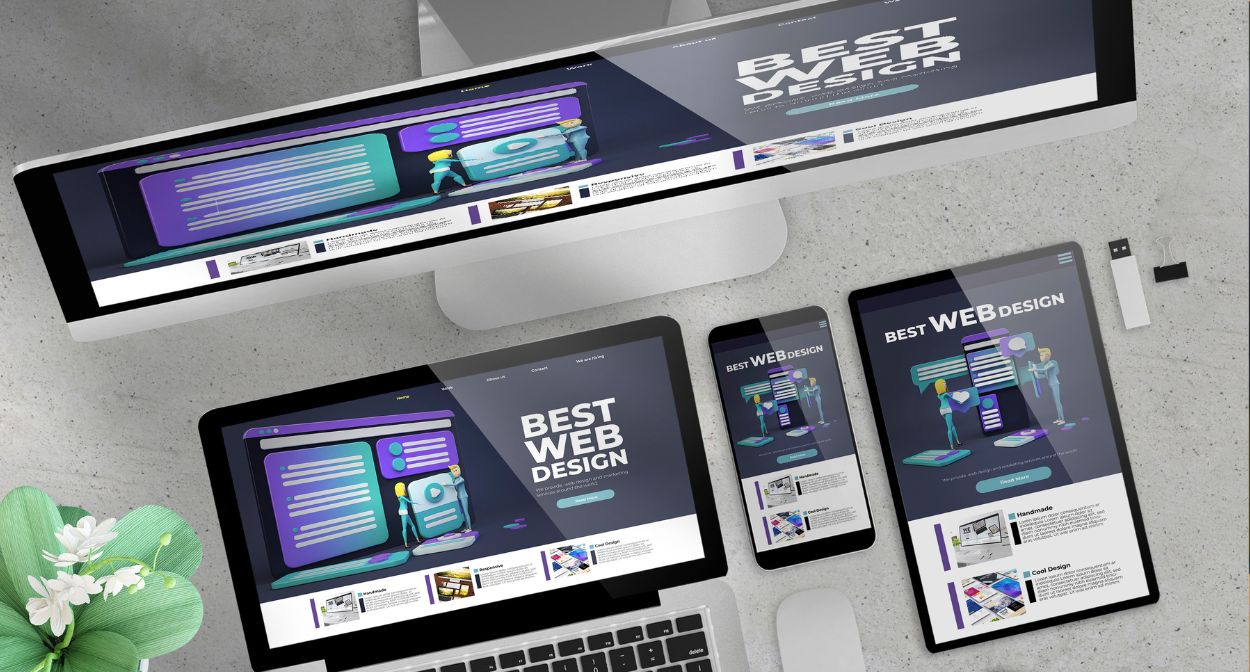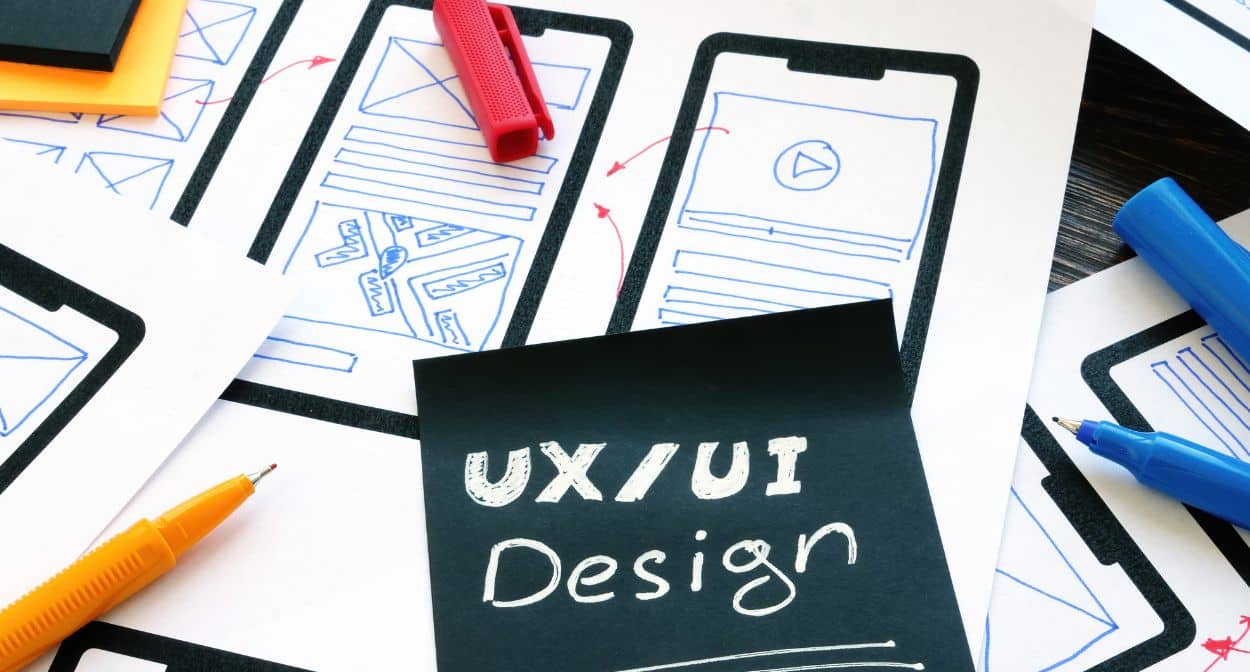Design and aesthetics are not just about making your website look pretty. They play a pivotal role in attracting, engaging, and converting your visitors into leads. In this article, I’ll guide you through the process of creating a lead generation website that is not only visually appealing but also highly functional.
Just like a well-coached sports team, every element of your website should know its role and work together to achieve the goal – generating leads. So, let’s dive right in and start designing your winning game plan.
The Role of Design in User Experience and Lead Generation
As a digital marketing expert, I can’t stress enough the impact of design on user experience and lead generation. Let’s break it down.
First Impressions Matter
When a visitor lands on your website, you have a few seconds to make a good impression. A poorly designed website can turn away potential leads faster than a well-placed pop-up ad. On the other hand, a well-designed website can captivate your visitors, encouraging them to stay longer and explore what you have to offer.
Navigating the Field
Imagine a football field without clear markings. It would be chaos, right? The same principle applies to your website. Clear navigation is a cornerstone of good design. It guides your visitors, allowing them to move around your website with ease and find the information they need without getting frustrated.
Readability: The Key to Engagement
A well-designed website ensures that your content is easy to read and understand. This involves choosing the right fonts, colors, and layout. Remember, your content could be gold, but if it’s presented in a way that’s hard to digest, your visitors won’t stick around to read it.
Designing for Lead Generation
Now, let’s talk about lead generation. Good design can significantly boost your lead generation efforts. Here’s how:
Call-to-Action (CTA) Placement
Your CTAs are your playmakers. They guide your visitors towards conversion. However, if your CTAs are hard to find or don’t stand out, your visitors won’t know what action to take. Good design ensures that your CTAs are prominently placed and visually striking.
Form Design
Your lead generation forms are your receivers. They catch the information your visitors throw at them. However, if your forms are too complicated or intimidating, your visitors might abandon them. Good design simplifies form filling, making it a breeze for your visitors.
Color Psychology
Colors can evoke emotions and drive actions. For instance, red creates a sense of urgency, while blue instills trust. Good design leverages color psychology to influence your visitors’ behavior and boost conversions.
To illustrate, let’s look at a real-world example. Dropbox, a file hosting service, uses a clean, minimalist design with clear navigation and readable fonts. Their CTAs are prominently placed and use contrasting colors to stand out. As a result, they have successfully generated millions of leads and customers.
Principles of Effective Web Design
Just as there are principles that guide how a successful sports team operates, there are principles that guide effective web design. These principles are the playbook that will help you create a lead generation website that is both attractive and functional. Let’s discuss these principles in detail.
Balance
Balance in web design is similar to balance in a basketball team. Just as a team needs a balance of offensive and defensive skills, a website needs a balance of heavy and light elements. Using the right mix of colors, shapes, and sizes will create a balanced layout that is pleasing to the eye.
Contrast
Contrast is a powerful design tool that can guide your visitors’ attention to the most important elements of your website. It’s like a spotlight in a theater, highlighting the star of the show. By using contrasting colors, shapes, or sizes, you can make your CTAs or key messages stand out.
Emphasis
Emphasis is about making certain parts of your website stand out. It’s like a star player who draws the attention of the fans. By emphasizing key elements of your website, such as your CTA or unique selling proposition, you can guide your visitors towards conversion.
Consistency
Consistency in web design is like consistency in a team’s performance. It builds familiarity and trust. By using consistent fonts, colors, and styles across your website, you can create a cohesive look and feel that reinforces your brand identity.
Unity
Unity is the relationship between the various parts of the website layout and the composition as a whole. It’s like a team where every player works together towards a common goal. A unified design creates a sense of harmony and wholeness that is pleasing to the eye.
Now, let’s look at a real-world example. Apple’s website is a great example of effective web design. It has a balanced and clean layout, uses contrast to highlight its products, emphasizes key messages, maintains consistency in its fonts and colors, and presents a unified brand image.
Balancing Aesthetics with Functionality
In the realm of web design, aesthetics and functionality are two sides of the same coin. Both are integral to creating a website that not only looks good but also performs well in terms of lead generation. Let’s explore this delicate balance.
Avoiding the Pitfall of Over-Designing
Over-designing a website can be likened to a painting overwhelmed with too many colors and shapes. It can lead to visual chaos, confusing your visitors and detracting from your main message. The goal of your website isn’t to be a testament to complex design, but a tool to effectively generate leads.
Embracing Simplicity
Simplicity is the ultimate sophistication, especially in web design. A simple website design makes it easy for your visitors to find what they’re looking for and take the desired action. It eliminates potential distractions and keeps the focus on the goal – lead generation.
Striking the Right Balance
So, how do you strike the right balance between aesthetics and functionality? Here are some tips:
Prioritize Usability
Usability refers to the ease of use of your website. A user-friendly website is easy to navigate, the content is easy to read, and the CTAs are easy to find. Prioritizing usability in your design process ensures that your website is not just visually appealing, but also functional.
Test Designs with Real Users
Testing your designs with real users is a crucial step in the design process. It’s like a dress rehearsal before the main performance. Conduct usability testing to get feedback from your users and make necessary adjustments to your design.
For instance, Airbnb’s website is a perfect example of a balance between aesthetics and functionality. It features a clean and attractive design, clear navigation, readable content, and prominent CTAs. As a result, it provides a seamless user experience and effectively generates leads.
In conclusion, a well-designed website is one that marries aesthetics and functionality in a harmonious union. It’s not about favoring one over the other, but about integrating both to create a website that is visually pleasing and effective in generating leads.
Conclusion
As we wrap up this discussion, it’s important to remember that the design and aesthetics of your lead generation website are not just about visual appeal. They play a pivotal role in the user experience and in your lead generation efforts.
Creating a successful lead generation website is about taking a user-centric approach to design. It’s about understanding your visitors’ needs and preferences and creating a design that caters to them. It’s about balancing beauty and functionality, making sure that your website is not only pleasing to the eye but also easy to use and effective in driving conversions.
But remember, website design is not a one-and-done deal. It’s an ongoing process that requires constant refinement and adaptation. As your business evolves, so should your website. As you learn more about your users, you should use that knowledge to improve your design.
Just like in sports, there’s always room for improvement. There’s always a new strategy to try, a new play to execute. So, keep testing, keep refining, and keep improving. Your website is your most valuable player in the digital marketing arena. Make sure it’s well-coached and ready to win.
I hope this guide has given you a better understanding of the importance of design and aesthetics in lead generation websites and has equipped you with the knowledge to create a website that is both beautiful and functional. Now, it’s time to put this knowledge into action and start designing your winning game plan.






